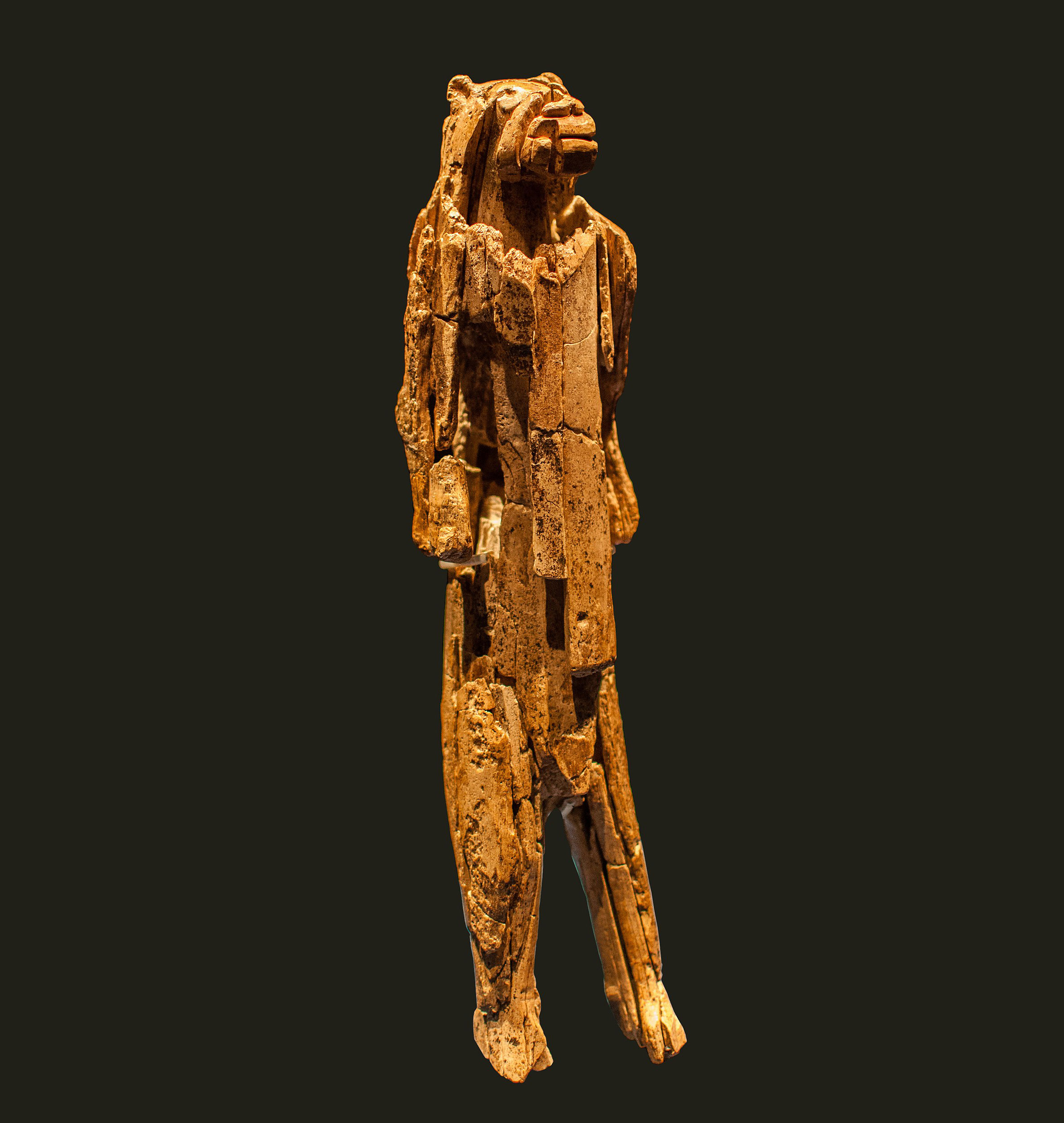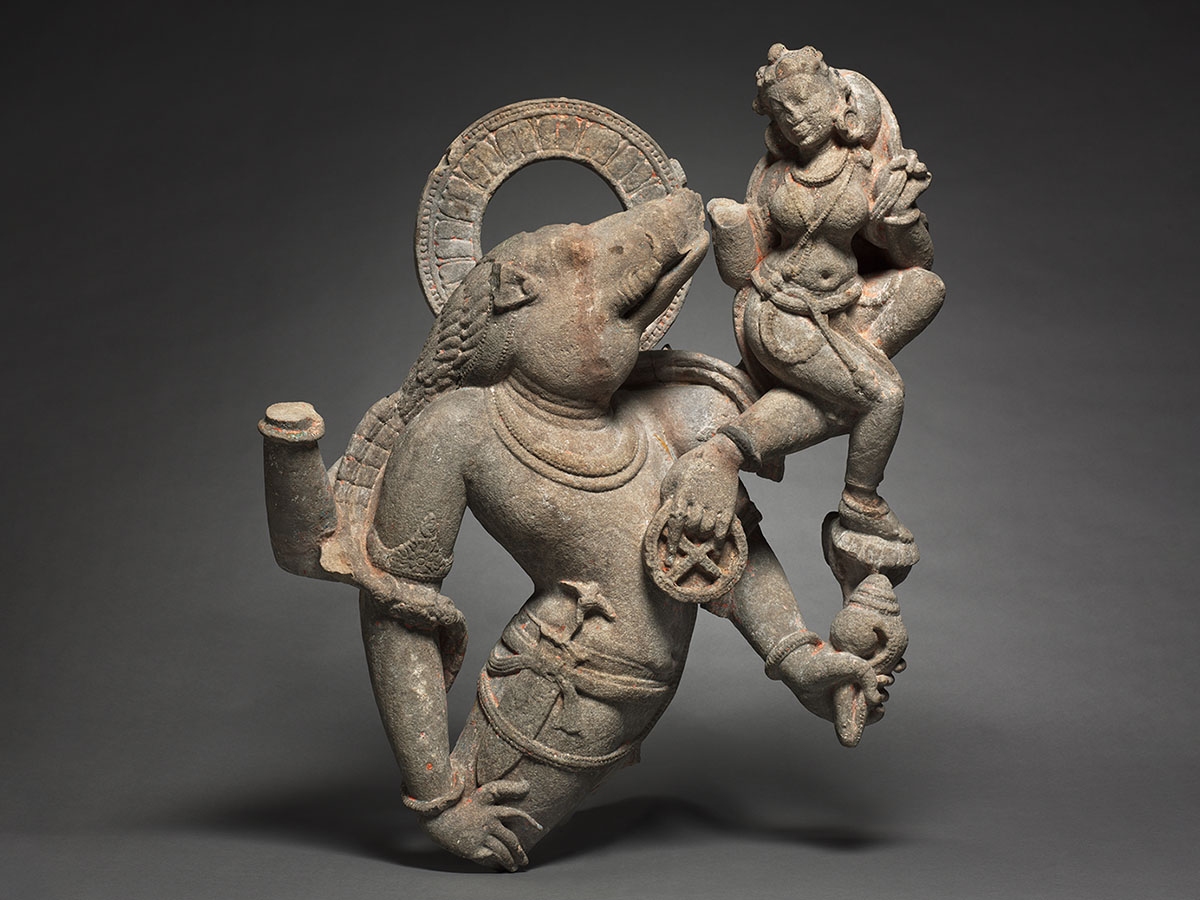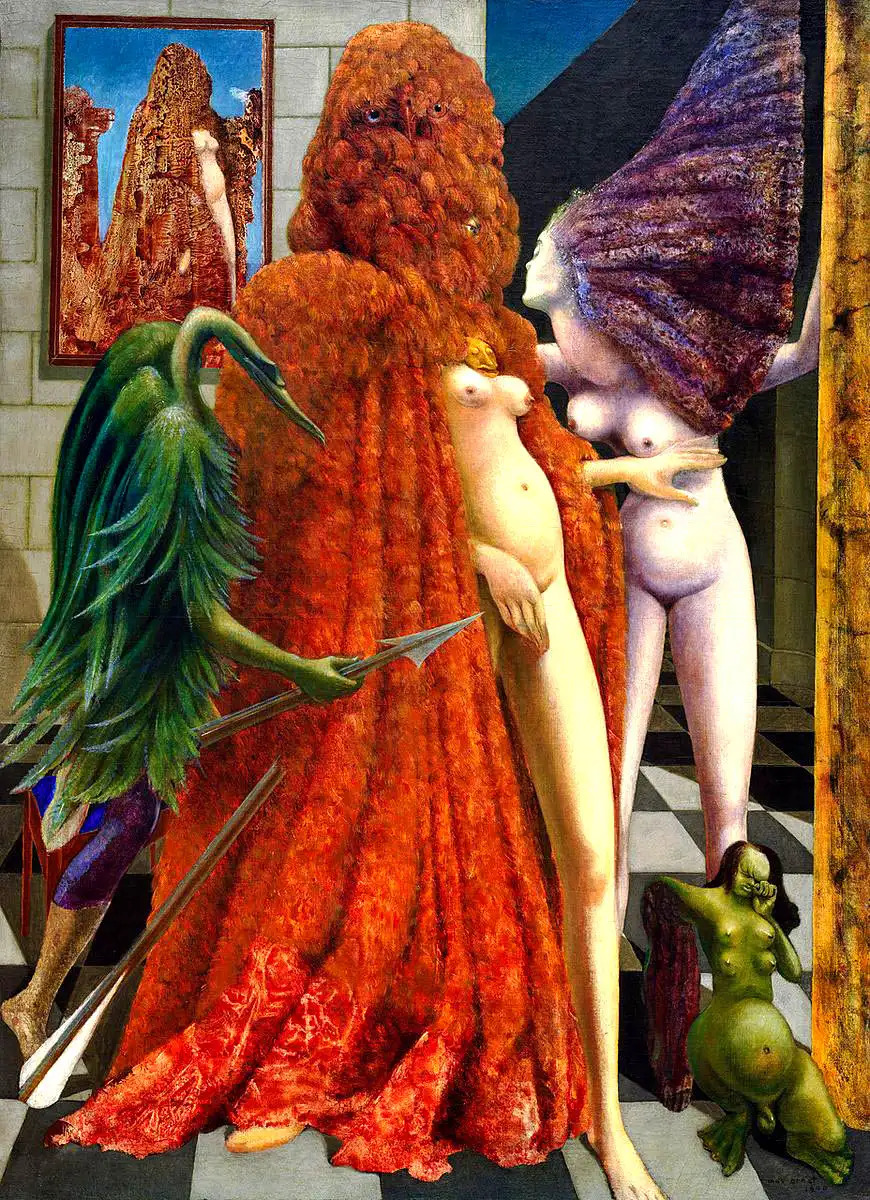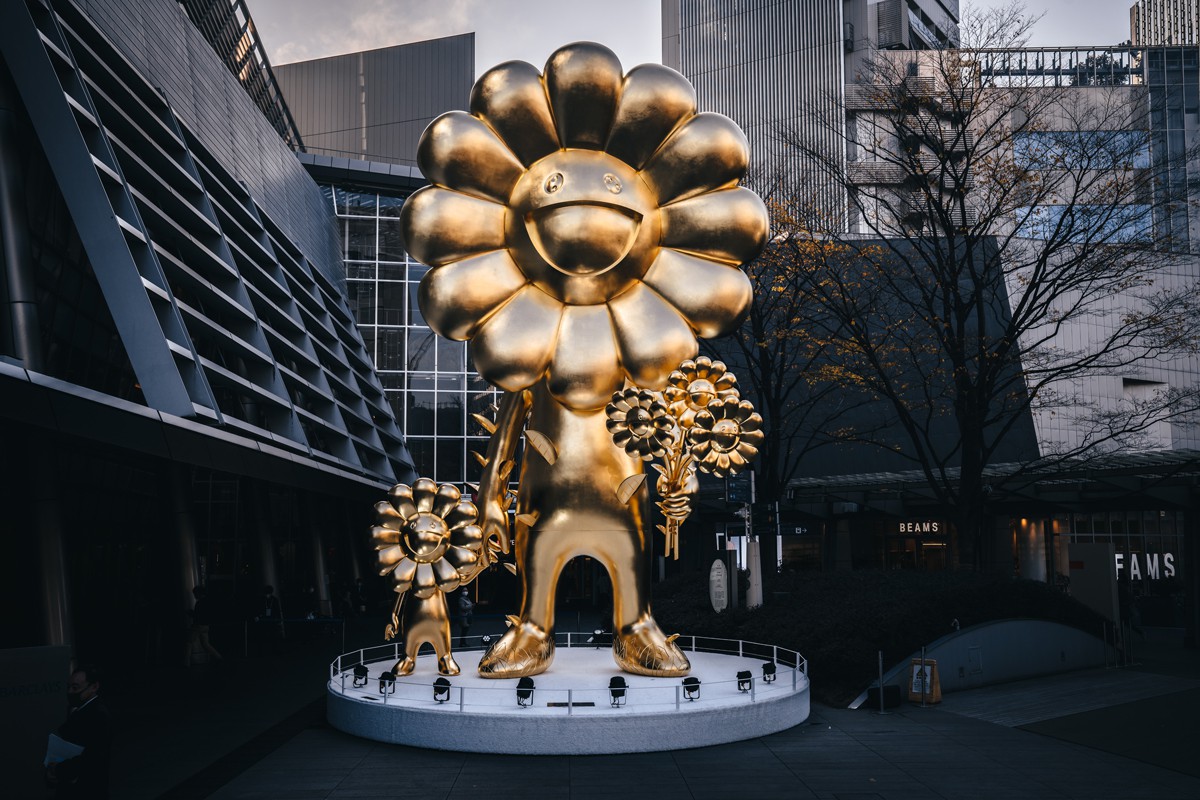On Anthropomorphism In Art
By Something CuratedThe inclination we have to ascribe human characteristics, emotions, or intentions to entities that are not human has a long history dating back to ancient civilisations from around the world — with early, well-preserved, material examples hailing from regions spanning Western Europe, Egypt and Greece, to the Indian subcontinent and China. Across diverse cultures, human beings have explored anthropomorphism, attributing qualities such as affection, envy, and sorrow to deities and divine beings. The practice is also commonly employed in creative outputs like visual art and literature, serving to conjure elements of fantasy, humour, satire, or even critique. In fact, the tradition of anthropomorphism is likely as ancient as the production of art itself. The word originates from the Greek “ánthrōpos,” meaning “human,” and “morphē,” signifying “form.”

The Löwenmensch figurine, in Germany, a sculpture depicting a human figure with a lion’s face, has been dated to around 35,000 years ago. The roots of anthropomorphic art extend into the depictions of Hindu deities featuring animal-like heads and limbs. Greek and Roman mythology also prominently feature anthropomorphism, exemplified by creatures like the centaur. Throughout the ages, fables, myths, and folklore have assigned specific attributes to various creatures, which subsequently became established, such as the regal nature associated with lions, the wisdom symbolised by owls, or the grandeur exuded by eagles. Contemporary theologians have asserted that anthropomorphism plays a vital role in the existence of religion, as it enables people to establish a connection with that which they worship. Some argue that even the presumption that deities can comprehend human language represents an anthropomorphic proclivity.

Philosophers and psychologists have been particularly drawn to anthropomorphism, arguing that this phenomenon can offer valuable insights into the human psyche. Sigmund Freud posited that we engage in anthropomorphism for emotional reasons, using it as a means to render elements in the world, which might otherwise be inaccessible or even menacing, more relatable. Salvador Dalí, one of the most renowned Surrealist artists, created the painting known as The Anthropomorphic Cabinet, deeply influenced by Freud’s psychoanalytic theories. Dalí once asserted that the sole distinction between ancient Greece and modernity is the presence of Freud’s ideas. Freud likened the human mind to a cabinet containing concealed drawers that can only be unlocked through psychoanalysis. In his artwork, Dalí depicted a cabinet fused with a female body, with the female hand extended to the side as if safeguarding her drawers from inspection by others.

Another point of reference for Dalí was Giuseppe Arcimboldo, a prominent figure in the late Italian Renaissance. Born in 1526 in Milan, Arcimboldo initially focused on court painting but later gained recognition for his portraits resembling collages. His works often came in sets of four, each relating to one of the seasons. Famously, Arcimboldo created paintings featuring fruits, vegetables, and other inanimate objects skilfully arranged to form recognisable human features. Another artist who drew inspiration from Arcimboldo was the German painter Max Ernst, who played a pioneering role in two significant art movements, Dada and Surrealism. Throughout his career, Ernst also ventured into poetry, sculpture, and graphic art. His distinctive and experimental approach can be attributed in part to his lack of formal training. In many of Ernst’s paintings, we encounter a plethora of outlandish apparitions, often depicting hybrid creatures that are part human, part bird.

Artists continue to reinterpret traditions of anthropomorphism to craft new narratives. For instance, Japanese contemporary artist Takashi Murakami frequently merges elements from traditional Japanese folklore with modern pop culture references, incorporating anthropomorphic beings into his work. Similarly, Indian artist Bharti Kher weaves animal and human forms into her sculptures and installations, delving into themes related to identity, gender, and the concept of transformation. In a tangential manner, American artist Nick Cave, renowned for his Soundsuits, elaborate and whimsical costumes that challenge the boundaries between human, object, and creature, prompts viewers to contemplate questions of self-expression through the lens of anthropomorphism. Numerous other contemporary artists are pushing the boundaries of anthropomorphism in art, evoking diverse histories and engaging in societal commentary.
Feature image: Salvador Dalí, The Anthropomorphic Cabinet, 1936. © Dalí Foundation